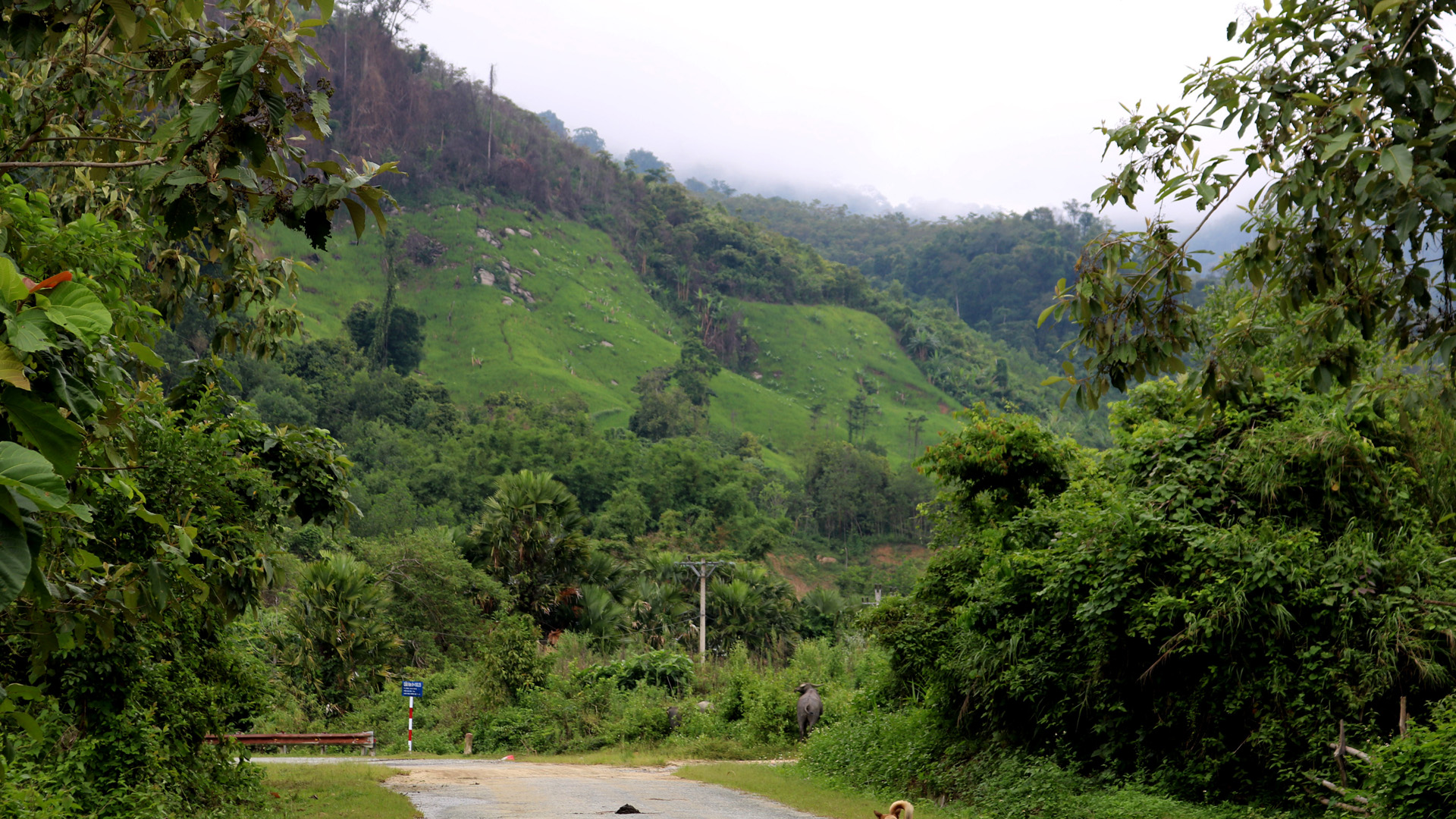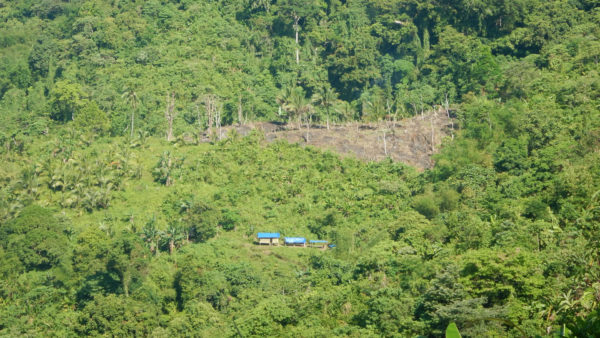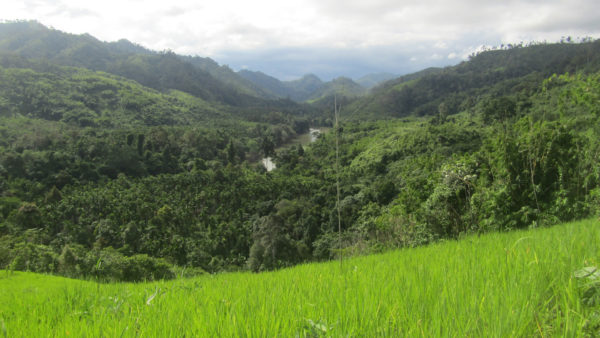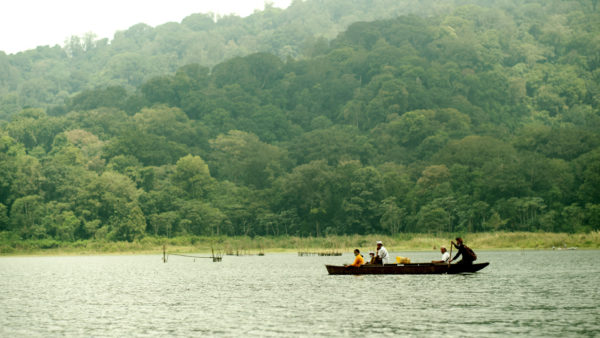First published on 10/16/2023, and last updated on 11/13/2023
By Phan Trieu Giang
Note: This article is from the recently published report “Celebrating territories of life in Southeast Asia.” The text has been edited for the ICCA Consortium website.
We returned to the western mountains of Quang Nam, one of the highest biodiversity areas in Vietnam, in the last days of 2021. Along the way are forests stretching as far as the eye can see. Mr. Nguyen Van Hoang, deputy director of the Dong Giang Protection Forest Management Board (PFMB), said that these are the most intact primeval forests on the southern Truong Son mountain range of Vietnam. The forests here cannot be well preserved without the participation of many stakeholders, especially the Co Tu Indigenous community.
The Co Tu people have lived and are attached to the Truong Son forests for many generations. However, according to current law, natural forests are managed by the state through state forest management boards. As a result, in many places native people’s access to forests and collection of forest products has become limited, affecting their traditional practices, wellbeing and source of income. Besides forest resources, other income sources of the Co Tu people are from crops (rice, cassava, chili, etc.), animal husbandry, employment as laborers, and especially acacia and Payment for Forest Environmental Services (PFES).
To harmonize community interests and forest conservation in Quang Nam, many initiatives have been adopted in the last two decades including allocating forest land to communities and contracting household groups and communities for forest protection. This form of contract for the community to protect forests and benefit from PFES is highly appreciated by many state forest owners and Indigenous communities.
Mr. Vu Phuc Thinh, director of Dong Giang PFMB, said that in the areas of stable and traditional forest with little impact, a community contract to protect the forest is appropriate. For forest areas that are easily impacted, high pressure of violations and have many ethnic groups such as the Kinh people, it is necessary to protect forests by specialized forest protection teams. Since 2013, in Dong Giang PFMB which has a total area of 37,500 hectares, nine out of eleven communes have been participating in contracting for forest protection. In Tay Giang PFMB, which has 50,570 hectares of mostly natural forest, all 64 communities are participating.
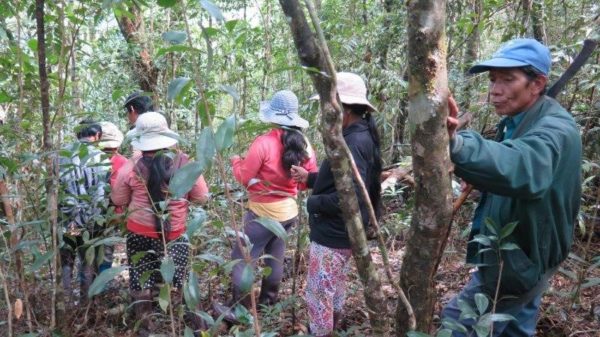
Although the state as forest owner still has a decisive role in forest management, the community has an active role in the model. They elect a self-governing board and forest protection groups. The board organizes forest patrols and distributes benefits in the community. The self-governing board in A So village in Ma Coih commune, Dong Giang district, for example, has seven forest protection groups with each group patrolling the forest two to three times per month. When encountering violations, the group will handle it themselves or report it to the forest owner, depending on the case. Because the culture and customs of the Co Tu ethnic group are still strong in the locality and the role of village elders and traditional boundaries are respected, handling of violations with customary laws is still effective.
Workshops among forest owners and local authorities showed that contracting for forest protection to the community is appropriate and effective because the Co Tu people live in the area and have a high sense of forest protection, especially for pristine forests and watersheds. People possess Indigenous knowledge, know the areas with big trees and wild animals and patrol the forest with ease. This participation of the Co Tu people in state forest protection helps maintain their customs and traditions, strengthens their roles and responsibilities towards the forest, helps villagers to collect forest products sustainably and improves their quality of life and income. In 2018, the village received about 550 million Vietnamese Dong (about USD 24,000) over six months.
Money from PFES is paid according to the agreed regulations. Twenty percent (20%) goes to the self-governing board’s activities, fifty percent (50%) is divided equally among contracted households, and the remaining thirty percent (30%) goes to the village fund to support the disabled members who cannot contract and for public works of the village. Pointing to the main road in the village, elder Nghiet said that thanks to the PFES money, people have repaired village roads and installed electricity for their long house. He added with a smile that when the village facilities are stable, then the community will consider developing eco-tourism.
Unfortunately, this is not the case for all communities. In discussions with stakeholders, it was pointed out that community patrols have weaknesses such as unprofessionalism, difficulty in assigning responsibility and limitations due to the customary fear of destroying village-mates’ animal traps. The community’s capacity to protect forests, especially in deterring and handling violators, is limited. In late 2018, the Quang Nam provincial government issued Resolution 46/2018/NQ-HDND to allocate funds to support the management and protection of natural forests, effectively transforming community-based forest protection to specialized forest protection forces to address these weaknesses. Some state forest owners in Dong Giang and Tay Giang Districts petitioned to maintain their community contracts and were approved due to their good socio-economic and environmental performance. This is the harmonized solution in the context of the existing legal framework which is unclear in recognizing traditional rights and sharing benefits from forests for native communities at the central level, and when state forest owners have to implement the central policy of downsizing staff resulting to serious shortage or human resources to protect forests.
In the future, representatives of the communities wish to continue the community contract model simultaneously with capacity building while waiting for the legal framework to change so that forests can be allocated to and protected by the people. In the long term, a sustainable solution is to help people strengthen their internal capacity and escape poverty through forest-friendly livelihood alternatives such as developing eco-tourism and planting trees and medicinal herbs under the forest canopy. The “one community, one product” model which has been applied in the region can help the community develop production, processing and market connection. For this to happen, it will be necessary to set up a village fund or a micro-finance fund with clear management regulations.
The successful application of community contracts for forest protection in Quang Nam province shows the importance of the initiative, flexibility and also compassion of state forest owners in applying the law appropriately, highly prioritizing the needs and interests of Indigenous Peoples. It also shows that a compromise in some instances may not give all the forest rights to communities but if they get the important rights such as access and benefits that are consistent with their traditions and interests, then their cooperation with state forest owners makes management of forest resources sustainable.
